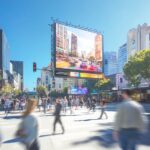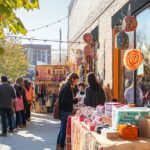In today’s competitive retail landscape, understanding the success of a store remodel is essential for enhancing customer experience and increasing sales. This article examines how foot traffic data provides valuable insights into these remodels, revealing not only the number of customers entering your store but also how their behavior changes after the renovation. We will discuss what foot traffic data entails, as well as the benefits and limitations associated with its collection. Additionally, we will highlight key factors to consider when analyzing this data, such as competitor benchmarking and visitor counts. Discover how to implement strategic changes based on your findings to optimize your store layout, marketing efforts, and store design. Join us as we explore the critical role of foot traffic data in measuring and maximizing the impact of your store remodels, with a focus on store performance and customer insights.
The Importance of Measuring Store Remodel Success
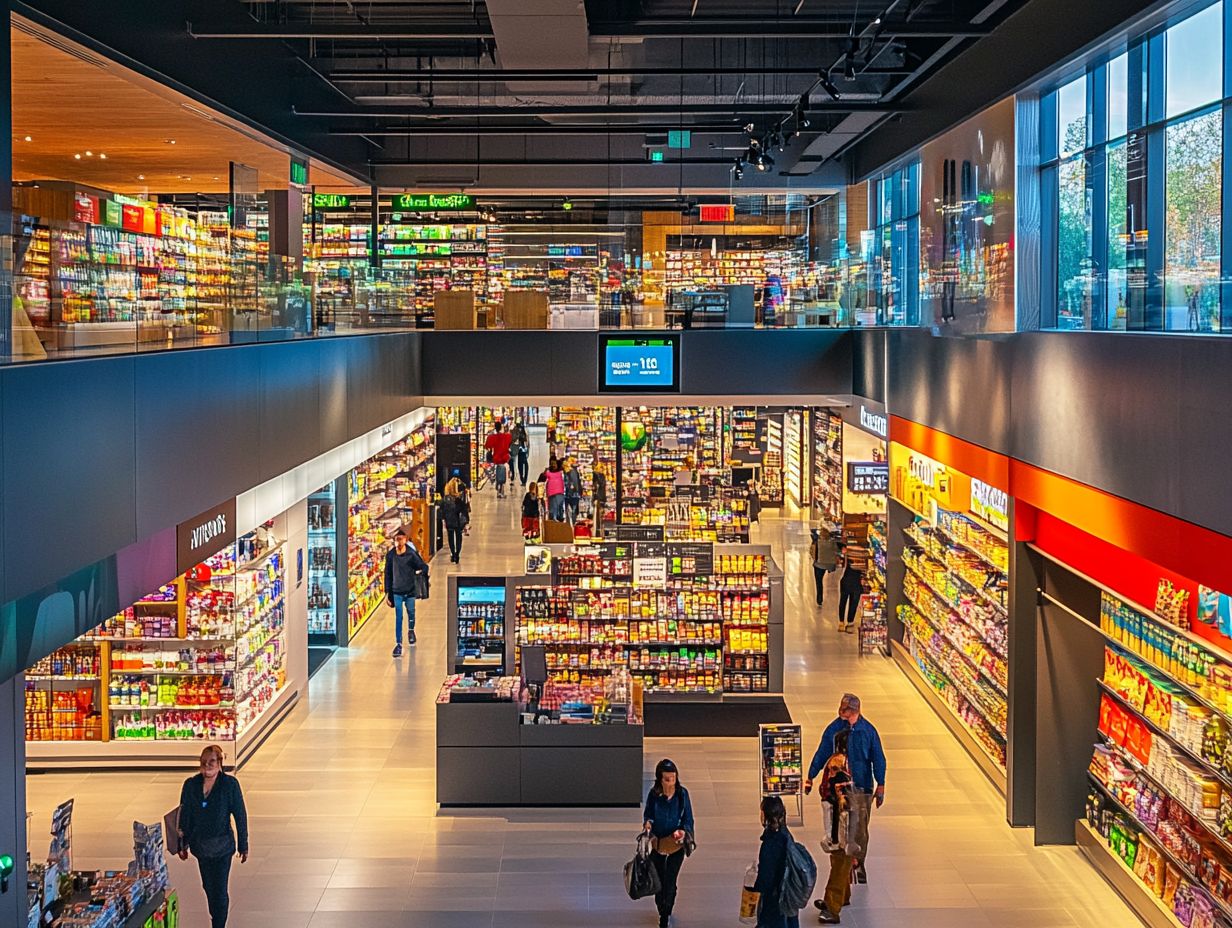
Measuring the success of a store remodel is essential for understanding its impact on customer behavior and the overall performance of the store. Renovations significantly affect shopper engagement, customer experience, and ultimately sales performance.
Therefore, it is crucial for retailers to adopt effective strategies for evaluating success. By utilizing specific key performance indicators (KPIs), retail analytics, and success measurement tools, businesses can assess the impact of the renovation, gauge customer satisfaction, and analyze changes in foot traffic data and sales conversion rates.
Furthermore, conducting a thorough data analysis to inform decisions after the remodel ensures that the store’s layout and design align with customer expectations and enhance profitability through store optimization.
Impact on Customer Experience and Sales
The impact of a store remodel on customer experience and sales performance can be significant, as changes in layout and design directly influence shopper engagement and brand perception.
By optimizing the retail environment and utilizing visual merchandising techniques, businesses can enhance the customer journey, improve occupancy rates, and ultimately increase conversion rates.
A store’s layout can greatly affect how customers navigate the space, which in turn influences their purchasing decisions. For example, strategically placed displays can highlight promotional items, while open pathways facilitate smoother movement and encourage exploration.
This increased shopper engagement often leads to longer dwell times, allowing customers to interact more deeply with products and, subsequently, boosting sales per square foot.
A well-designed store not only attracts new customers but also retains existing ones by creating a pleasant shopping atmosphere that fosters brand loyalty and store ambiance.
Ultimately, integrating thoughtful design principles can optimize customer behavior patterns, driving both satisfaction and revenue while enhancing store accessibility.
Using Foot Traffic Data to Measure Success
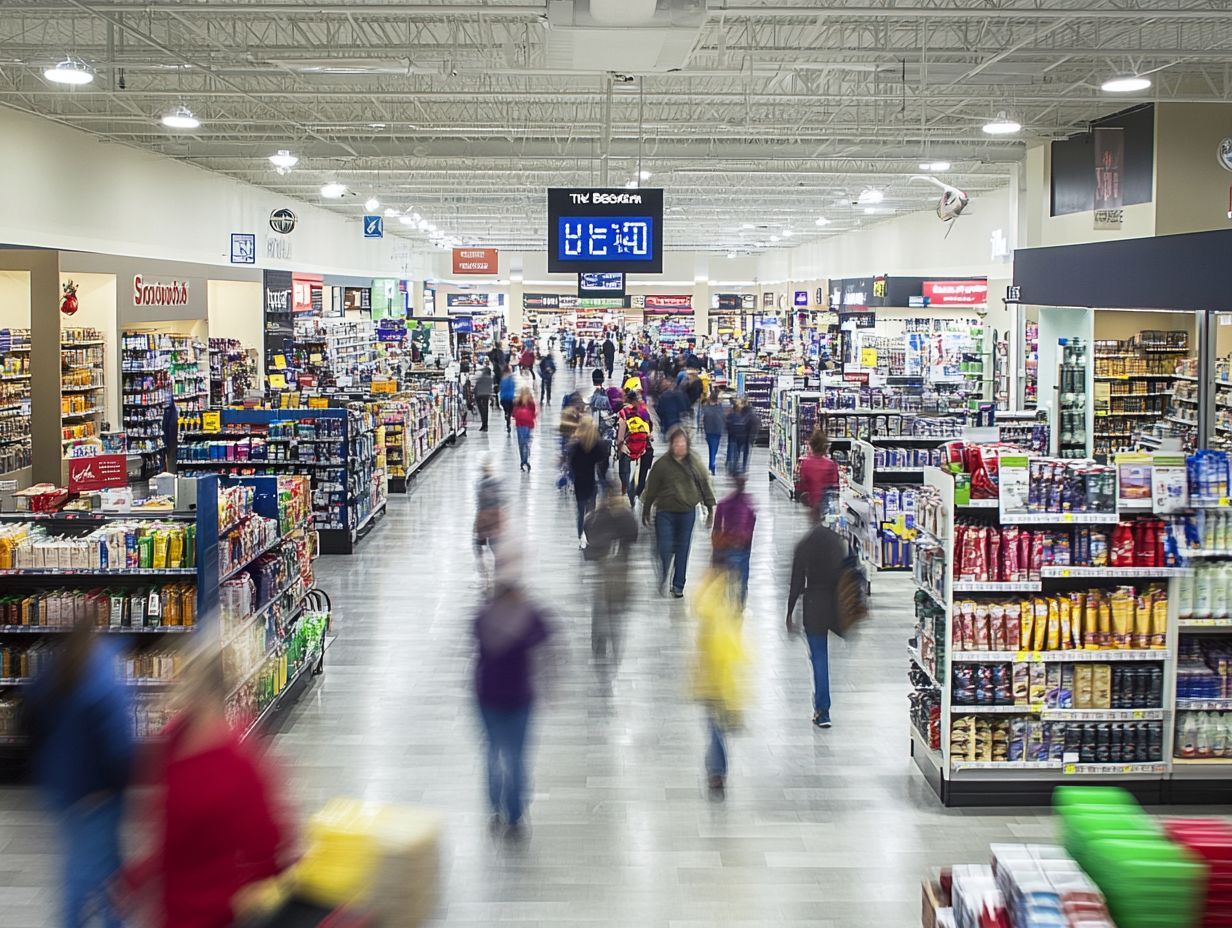
Foot traffic data is instrumental in evaluating the success of store remodels. This data provides insights into traffic patterns, the number of customers visiting the store, and the overall engagement of customers with the store.
Retailers can extract valuable consumer insights from foot traffic data, which can inform future marketing strategies and enhance operational efficiency. Retail analytics tools and traffic counting systems are employed by retailers and businesses to assess store performance, analyze shopper behavior, and understand the return on investment (ROI) and remodel ROI related to their remodeling efforts, as well as the impact on loyalty programs.
What is Foot Traffic Data and How is it Collected?
Foot traffic data consists of quantitative measures that track the number of customers entering a store over a specific period. This data offers valuable insights into shopper behaviors and performance metrics for the store, including visitor counts and shop visits.
Various traffic counting systems, such as infrared sensors, video analytics, and mobile tracking technologies, collect foot traffic data by measuring customer journeys and shopping habits. These systems provide more than just the total volume of foot traffic; they also deliver metrics such as peak hours, dwell time, and conversion rates.
The integration of retail technology is crucial for processing foot traffic data, allowing retailers to gain a deeper understanding of consumer behavior. By analyzing the correlations between foot traffic and sales performance, businesses can make informed, data-driven decisions that enhance profitability and foster customer loyalty in a competitive marketplace.
Benefits and Limitations of Using Foot Traffic Data
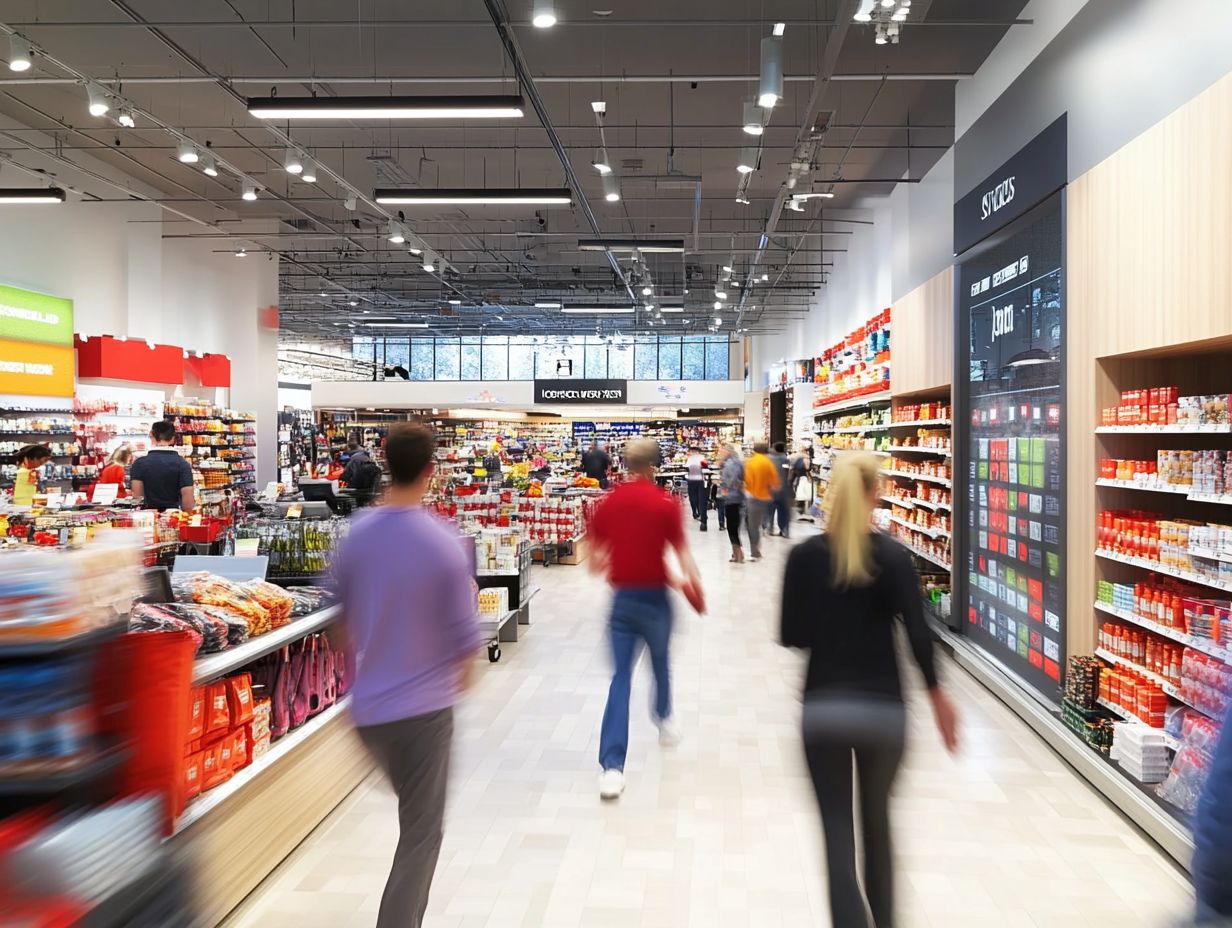
The use of foot traffic data offers several advantages, including enhanced marketing strategies and improved store layout efficiency. However, there are also disadvantages related to how the data is collected and utilized, such as potential inaccuracies in demographic analysis. The benefits and drawbacks of foot traffic data can be illustrated through the following examples:
Advantages of Using Foot Traffic Data:
- Understanding Traffic Patterns: Foot traffic data allows businesses to identify peak hours, assess traffic sources, and gain insights into customer behavior. This information can be applied in various ways:
- Store staff can be scheduled based on anticipated customer volumes, addressing staffing needs.
- Promotional offers can be customized to attract customers during slower periods, enhancing promotional strategies.
- Sales trends for specific products can be identified and optimized, affecting inventory turnover.
- Business locations can be strategically chosen based on reliable traffic data using location analytics.
- Customer Satisfaction: Foot traffic data can help businesses make improvements that enhance customer satisfaction, such as:
- Understanding which areas of the store draw the most customer interest.
- Determining the appropriate number of staff members to schedule during peak hours to improve service.
- Identifying popular traffic patterns to ensure customers can easily find necessary items, optimizing product placement.
- Operational Efficiency: Foot traffic data contributes to effective operational metrics for running a successful business. Retailers can save costs by using this data to determine optimal employee scheduling, ensuring that customers receive the attention they desire. For instance, if foot traffic data reveals that fresh produce is a popular area of interest, a grocery store might position produce near the entrance to make it one of the first areas customers encounter, improving traffic flow and store accessibility.
Disadvantages of Using Foot Traffic Data:
- Lack of Context: While foot traffic data indicates movement trends, it does not provide context regarding customer intentions or preferences. For example, a heavily trafficked area, like a long checkout line, may not necessarily indicate that customers want to spend time there. This lack of context can lead businesses to make decisions that negatively impact their success, such as inappropriate hiring practices, poor inventory choices, or inefficient payment options.
- Lack of Demographic Insights: Foot traffic data typically does not account for customer demographics. For instance, a business may observe high foot traffic without corresponding purchases, which could be due to a mismatch between the products offered and the interests of the demographic passing by. If the business decides to hire more employees based solely on foot traffic data, expecting increased sales, this decision may prove unsuccessful.
- Misleading Data: Foot traffic data can be misinterpreted if companies do not consider the 24-hour time frames or fail to think through the consequences of their decisions. For example, if a store notices a spike in foot traffic at 8 AM on a Sunday, they might consider extending employee hours. However, without understanding the context of this data, they may overlook the fact that the spike was primarily due to joggers who are unlikely to make purchases.
Factors to Consider When Analyzing Foot Traffic Data
Several factors can influence the analysis of foot traffic data, including seasonal trends, location analysis, and demographic trends.
External elements such as holidays and local events must also be considered, as they can significantly affect store traffic and shopper behavior, contributing to store traffic spikes.
A thorough understanding of these variables, combined with effective traffic forecasting methods, can assist retailers in optimizing their marketing strategies and enhancing customer retention through targeted promotional strategies.
Seasonal Trends and External Factors
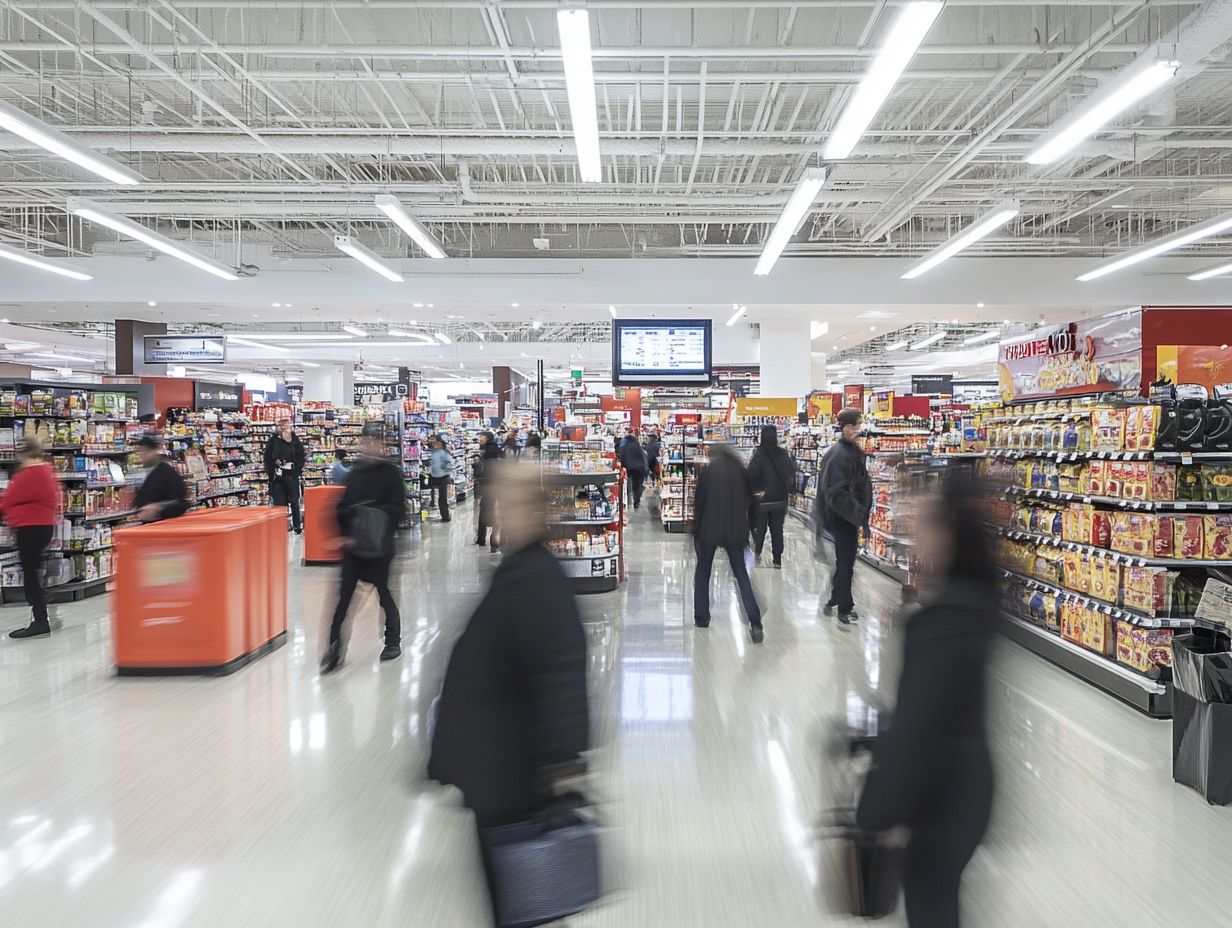
External factors and seasonal trends play a crucial role in managing customer visits by providing insights into when sales are likely to occur. Understanding these factors is essential for analyzing foot traffic patterns and executing effective pricing strategies. External influences include holidays, weather conditions, and local events. Retailers must adapt their marketing strategies to align with these factors to effectively engage customers with their stores and products.
For instance, the holiday season is one of the most heavily trafficked times of the year for many retailers, driven by increased consumer spending. Conversely, inclement weather can significantly impact foot traffic.
Additionally, understanding customer demographics is vital, as various demographic factors influence traffic patterns. Retailers should take into account the age and income levels of their customers when developing promotions and marketing campaigns, utilizing demographic shifts and customer segmentation.
Shifting shopping trends also play a role in traffic patterns. The rise of experiential retailing and experiential design, for example, has changed the way stores attract customers, impacting both social media influence and the balance of online vs in-store traffic.
Retail analytics can further enhance understanding; by analyzing sales data, retailers can anticipate traffic patterns and improve store performance. Insights from foot traffic data and visitor counts allow them to adjust inventory and staffing needs to accommodate more customers during peak shopping times or to enhance the shopping experience during slower periods. This approach reflects effective retail management and operational efficiency.
Comparison to Pre-Remodel Foot Traffic
Comparing current foot traffic data to pre-remodel statistics is crucial for assessing the impact of renovations on store performance and understanding traffic patterns. This process is integral to store traffic analysis and renovation impact measurement.
This analysis allows retailers to evaluate the effectiveness of their remodeling strategies, providing insights into customer behavior and helping to quantify the return on investment (ROI) of the project. By analyzing these store performance metrics, retailers can make data-driven decisions for future store renovations.
By closely monitoring key performance indicators (KPIs) such as customer dwell time and conversion rates before and after the remodel, businesses can determine how well the changes resonate with their clientele.
This data-driven approach enhances the understanding of consumer behavior, revealing preferences or trends that emerged after the renovation.
Retailers can then optimize their store layout and visual merchandising strategies, ensuring that the physical space not only attracts more visitors but also improves the overall shopping experience and customer satisfaction. This experiential design approach enhances the store ambiance and brand perception.
Ultimately, these comparisons are instrumental in guiding future decisions and investments in store design, shopper engagement initiatives, and customer journey optimization, taking into account consumer preferences and demographic analysis.
Implementing Changes Based on Foot Traffic Data
Adjusting store layouts based on footfall measurement and data analysis is crucial for improving merchandising strategies and maximizing shopper engagement. This involves store optimization to enhance the store atmosphere and traffic flow.
Insights from retail analytics enable businesses to make informed decisions regarding layout optimization, visual merchandising, and marketing strategies that enhance sales performance and customer satisfaction. Understanding customer insights and shopper psychology is key to improving sales growth and consumer spending habits.
Adjusting Store Layout and Merchandising
Modifying store layout and merchandising strategies based on foot traffic data is essential for enhancing layout efficiency and shopper engagement. This involves using location analytics and store traffic spikes to guide product placement and ensure effective retail space utilization.
Retailers can leverage data insights to identify high-traffic zones, optimize product placement, and create a more inviting store environment that encourages customer interaction.
By tracking customer movement and assessing traffic flow, retailers can strategically relocate key merchandise to less frequented areas of the store, thereby boosting overall sales. Eye-catching displays in these areas can enhance store ambiance and capture shopper interest, ultimately improving sales per square foot and conversion rates.
Flexible layout optimization enables retailers to respond swiftly to changing consumer habits, ensuring that promotional merchandise is consistently positioned in visible locations. This approach improves sales forecasting and enhances the impact of promotional strategies.
These adjustments not only enrich the customer experience but also increase the likelihood of serendipitous shopping, as customers are encouraged to explore the aisles for new items.
Additionally, effective signage and navigation aids assist shoppers in finding their way, further enhancing the overall shopping experience.
Marketing Strategies to Increase Foot Traffic
Implementing effective marketing strategies to increase foot traffic is essential for enhancing sales conversion and overall store performance. By leveraging seasonal trends, analyzing shopper demographics, and understanding customer segmentation, retailers can develop targeted strategies that capture shopper interest and attract more customers to their physical stores, thus improving marketing impact.
In a competitive retail environment, it is crucial to know when to promote seasonal offers. For instance, advertising promotions just before a holiday or event can boost sales before foot traffic declines, while marketing after an event can appeal to consumers who missed out and are likely to spend. Understanding seasonal variations and using competitive analysis and trend analysis tools can help retailers optimize their timing and pricing strategies.
Moreover, retail marketing strategies that foster customer engagement—such as loyalty programs, interactive experiences, and timely promotions—can enhance the likelihood of conversion, leaving a lasting positive impression on shoppers.
By tracking key retail metrics such as store accessibility and customer feedback, retailers can evaluate the effectiveness of their marketing strategies and make necessary adjustments to improve foot traffic and other sales key performance indicators (KPIs). This involves using measurement tools to gain actionable insights into consumer behavior and marketing impact.


